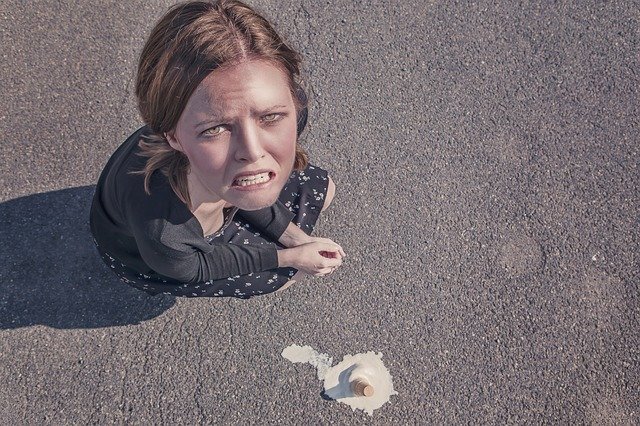If you are an SEO expert, you must have an idea of what is good and what is bad for your SEO strategy. While bad SEO is not a new concept and has been always there in the industry, most successful SEO strategists avoid them at all costs.
Bad SEO can literally crush your entire SEO campaign. And hence it is best to avoid these unethical SEO practices that pose a threat to your hard work.
Bad SEO – What does it mean?
Every SEO expert knows that it is not allowed to cross the boundaries set by Google webmaster guidelines. Anything beyond that is treated as bad SEO. If you are using outdated or unethical SEO tactics, then too, it will come under the category of bad SEO. Search engine optimisation experts need to refrain from using bad SEO tactics as they may backfire and affect the rankings of a website badly.
Let us now take a look at all those SEO practices which are actually considered to be the bad boys in the SEO industry.
10 Worst SEO Practices You Should Never Resort To!
1. Keyword stuffing:
A content replete with keywords is no good for search engine optimisation. If you are filling the blog with excessive keywords, then this is known as keyword stuffing. It is one of the most practiced bad SEO habits.
The target audience will find such content extremely boring and useless. And the search engines will easily understand that you are trying to use a cheap trick to rank high. It will have a bad impact on Google algorithms.
The right thing to do is to use the keywords in the main heading, meta description, introductory paragraph and once or twice throughout the body.
2. Plagiarised content:
If you wish to make any content SEO friendly, then make sure you never use plagiarised content. Every piece of content on the website needs to be absolutely original and unique. When an SEO expert publishes duplicated content on a website, it again falls under bad SEO.
The source from where you have been copying the content has already been indexed by search engines. So there is no use in publishing duplicate content on another website as it will not add any new perspective for your target audience. In case you find something exceptionally useful and want to publish it as it is on your website, use the “no index no follow” technique.
3. Poor quality guest post:
Being an SEO professional, you should feature only those writers who offer unique, error-free and engaging content. Make sure those content bring value to your target audience. In case their contents do not match these requirements, you should not publish them on the website. Otherwise, it will degrade the quality of your website.
4. Excessive advertisements above the fold:
When there are way too many ads above the fold of a website, Google considers it to be a punishable offence. It is that part which a reader can view without having to scroll. Think just like your potential clients and you will instantly understand how irksome it gets when there are too many ads in that part.
So, if you are witnessing a steep decline in traffic, then you can check if the fold has multiple advertisements.
5. Slow page loading speed:
If your website takes more than 3 seconds to load, or is unavailable at certain hours of the day, then know that it is a horrendous mistake. Make sure that the website is accessible 24/7. Also, the speed should be super-fast because your target audience won’t wait for long and can easily switch to another relevant website.
6. Avoiding Google Webmaster tools:
These tools have been offered by Google exclusively for efficient communication. These tools prove to be highly beneficial for SEO experts. They offer tons of details and information regarding your site’s search presence & rankings which can help you learn and improve your entire SEO game.
7. No internal linking:
If you are not referring to your own content by using internal linking, then it is considered to be extremely bad SEO. Your website should be information galore for all the readers. The more time your viewers spend on your website, the better the results will be for you.
8. Camouflaged keywords:
Some SEO experts use this trick and fail badly. They keep the keyword text in the same colour and think that they can easily camouflage the keyword in the text. But this is a really old, outdated black hat SEO technique. Search crawlers can easily identify these invisible keywords and make sure that your website ranking crashes down.
9. Misguiding blog titles:
Never ever use misleading titles for your blogs. You will lose the interest, engagement and trust of your target audience if it continues to happen regularly. Suppose your blog title reads as “Top 10 tips for inculcating leadership skills”, and the content explains about contemporary leaders of your country.
This won’t bring value to those who are actually searching for content related to leadership skill-building. Always use apt titles which clearly indicate what your content is about.
10. Inconsistent content creation:
Another major bad SEO practice is that you are highly inconsistent with your content creation. Effective SEO needs consistency. But if you fail to publish valuable content on a regular basis, it will not be favourable for your SEO strategy.
In a nutshell
Search engine optimisation is indeed highly intricate. You need years of experience and patience to gain mastery over this complicated subject. If you do not want to devote much time and wish to experience quick success by resorting to bad SEO practices, know that you will have to face the consequences. Black hat SEO can bring you instant results.
But the gratification will stay for a few days until search engines understand your trick and push down your website in the search results. In extreme cases, these bad practices can even get your site banned.




 Why Use QuickBooks Cloud Hosting Services?
Why Use QuickBooks Cloud Hosting Services?